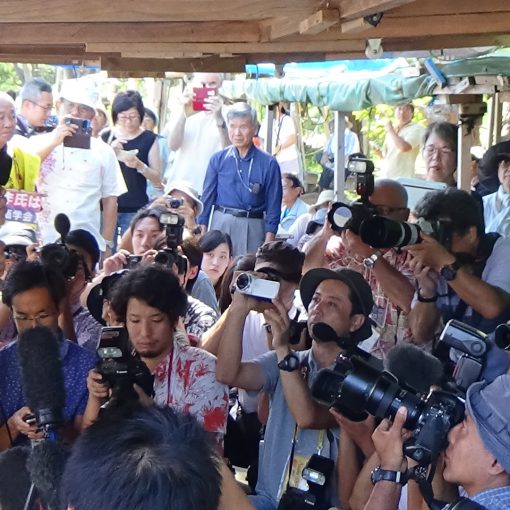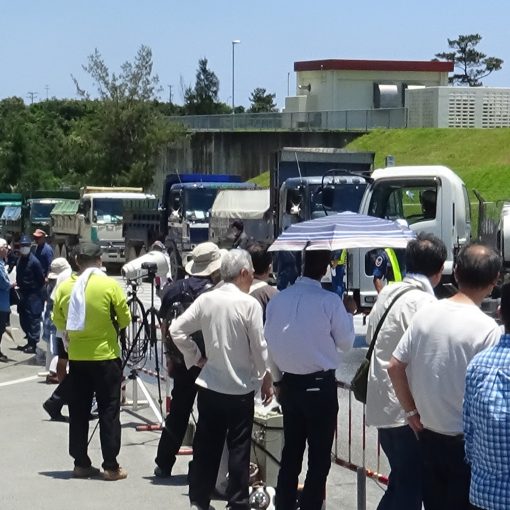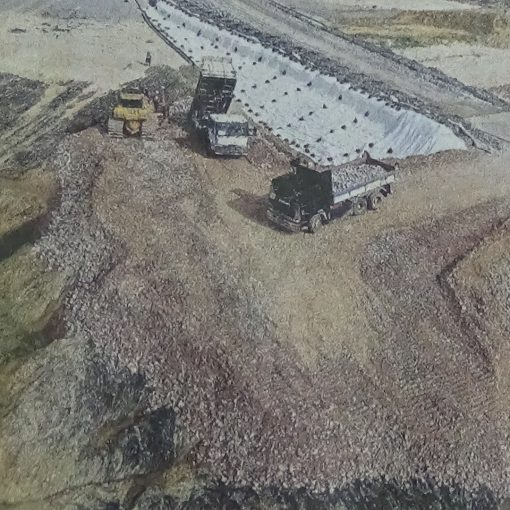July 3, 2020 Ryukyu Shimpo
On July 2 a research group on Henoko, Okinawa (representative Masaaki Tateishi, professor emeritus at Niigata University), which is independently inspecting Futenma Replacement Facility construction in Henoko, Nago City associated with the relocation of U.S. Futenma Air Station, announced analysis results showing that if an earthquake having a seismic intensity of 1 or more occurs, there is a high risk that the seawalls will collapse due to the expanse of soft ground in Oura Bay. Even before this point, the potential that the seawalls may collapse has been identified. However, this time, even with calculations conducted in accordance with the Okinawa Defense Bureau’s (ODB’s) design requirements from which some data has been omitted, it has been identified that there is danger of the seawalls collapsing when an earthquake occurs.
The research group pointed out that “Forcing construction through in Henoko/Oura Bay is reckless”. Even the U.S. House Armed Services Subcommittee on Readiness, with the soft ground in mind, is showing concern about continuing FRF construction in relation to the National Defense Authorization Act (NDAA).
According to the research group, when the ODB examined ground improvement work on the soft ground, the stability of the seawalls was only calculated at normal times and the ODB explained that there was “no problem”. This time, the research group conducted “stability verification” ascertaining whether or not the seawalls would be safe in the case of an earthquake. The results made clear that even at a seismic intensity of 1 there would be risk of some seawalls breaking, and at a seismic intensity of 2 or more there would be risk of the majority of the outer peripheral seawalls surrounding the Oura Bay side collapsing.
It was measured that from 2010 to 2020 in Toyohara, Nago City, which neighbors Henoko, there were 60 earthquakes having a seismic intensity of 1 or more, 13 earthquakes having a seismic intensity of 2 or more, and 3 earthquakes having a seismic intensity of 3 or more. This would calculate to, over a 1-year period, the frequency of an earthquake having a seismic intensity of 1 or more being 6 times and a seismic intensity of 2 or more being 1 time, as well as a seismic intensity of 3 or more being 1 time every 3 years. The research group explained, “There is an extremely high chance that there will be an earthquake of the same scale during construction or when construction is completed”.
On July 2 the research group sent the research results to and requested confirmation from the Ministry of Defense, the ODB, and the technical investigative commission established by the ODB. In an interview with the Ryukyu Shimpo, Representative Tateishi mentioned that if the ODB alleges that the research group’s calculations are incorrect, the ODB will have to make calculations on its own and prove safety.
(English translation by T&CT and Erin Jones)





